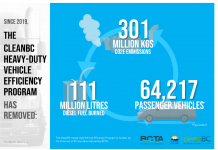The U.S. Federal Motor Carrier Safety Administration (FMCSA) has recently reminded employers of all commercial license-holding drivers that they must conduct an annual query for the Drug and Alcohol Clearinghouse. FMCSA’s goal is safety, but industry insiders fear that the number of drivers may be reduced by the Clearinghouse’s imposed restrictions.
Road safety is the responsibility of all who drive, but it is of the greatest importance for those who make a living in road transport. The Federal Motor Carrier Safety Administration (FMCSA) goal is to reduce crashes, injuries, and fatalities involving large trucks and buses.
Two years ago FMCSA established the Drug and Alcohol Clearinghouse to provide both the FMCSA and employers real-time information to keep anyone with an infraction off the road until they have completed their RTD process. It also makes it more difficult for drivers with poor driving records to hide infraction information from future employers.
The Clearinghouse requires carriers, medical review officers, third-party administrators, and substance abuse professionals to report information about drivers who:
- Test positive for drugs or alcohol;
- Refuse drug and alcohol testing; and
- Undergo the return-to-duty drug and alcohol rehabilitation process.
Canadian drivers who work in the United States are also subject to Clearinghouse rules and regulations.
Canadian cannabis laws differ from those in America. Due diligence must be taken by Canadian drivers, who might use cannabis products on their own time, but then might still be under the influence while working in the U.S. If caught by the DOT, the violation would go on their record.
Clearinghouse data shows that positive drug tests far outweigh other forms of violation. This includes drug test refusal and all alcohol violations. The 2021 numbers show cannabis violations to be the highest, with over three times more violations for marijuana use than the next highest substance, cocaine.
The kicker is that almost 100,000 drivers are listed with at least one violation, and approximately 75,000 drivers have prohibited status. 57,000 drivers have not begun their return to duty (RTD) process.
The concern is that many of the drivers who have not started their RTD process may leave truck driving as a career, rather than complete the required treatment program, needed to regain non-prohibited status.
In an industry suffering from constant truck driver shortages, this means there is the potential of losing another 50,000 drivers above the current shortfall of professional drivers in the U.S., estimated to be around 80,000.
As the legalization of cannabis grows, there are ensuing problems. Driving across borders and state lines, with different laws can make adherence to state laws confusing. The industry must heighten awareness in communicating that the use of controlled substances of any or all types, not just cannabis or alcohol, is illegal and dangerous.
Industry estimates predict the need for one million drivers over the next decade to replace drivers that leave the industry and also to sustain industry growth in the U.S. Canadian estimates are for between 18,000 – 20,000 annually over that same time frame.
As these new drivers enter into the trucking industry they will need awareness training in compliance with Clearinghouse rules and the importance of adhering to safe practices. These include understanding the ramifications of a positive drug or alcohol test.
The industry must be proactive in communicating that controlled substances, including marijuana, are still illegal for professional truck drivers in their safety-sensitive roles.
Carriers will need strategies aimed at both compliance and driver retention while maintaining the importance of safety. Ensuring the future means planning today. As new drivers come into the industry, the hope is that driver retention also improves as the Clearinghouse’s mandate is better understood and accepted.
FMCSA’s Drug and Alcohol Clearinghouse goal is to improve road safety. Its mandate will ensure that both existing and new drivers understand and respect the absolute importance of safe driving practices. More importantly, the roads will be safer for everyone.






















